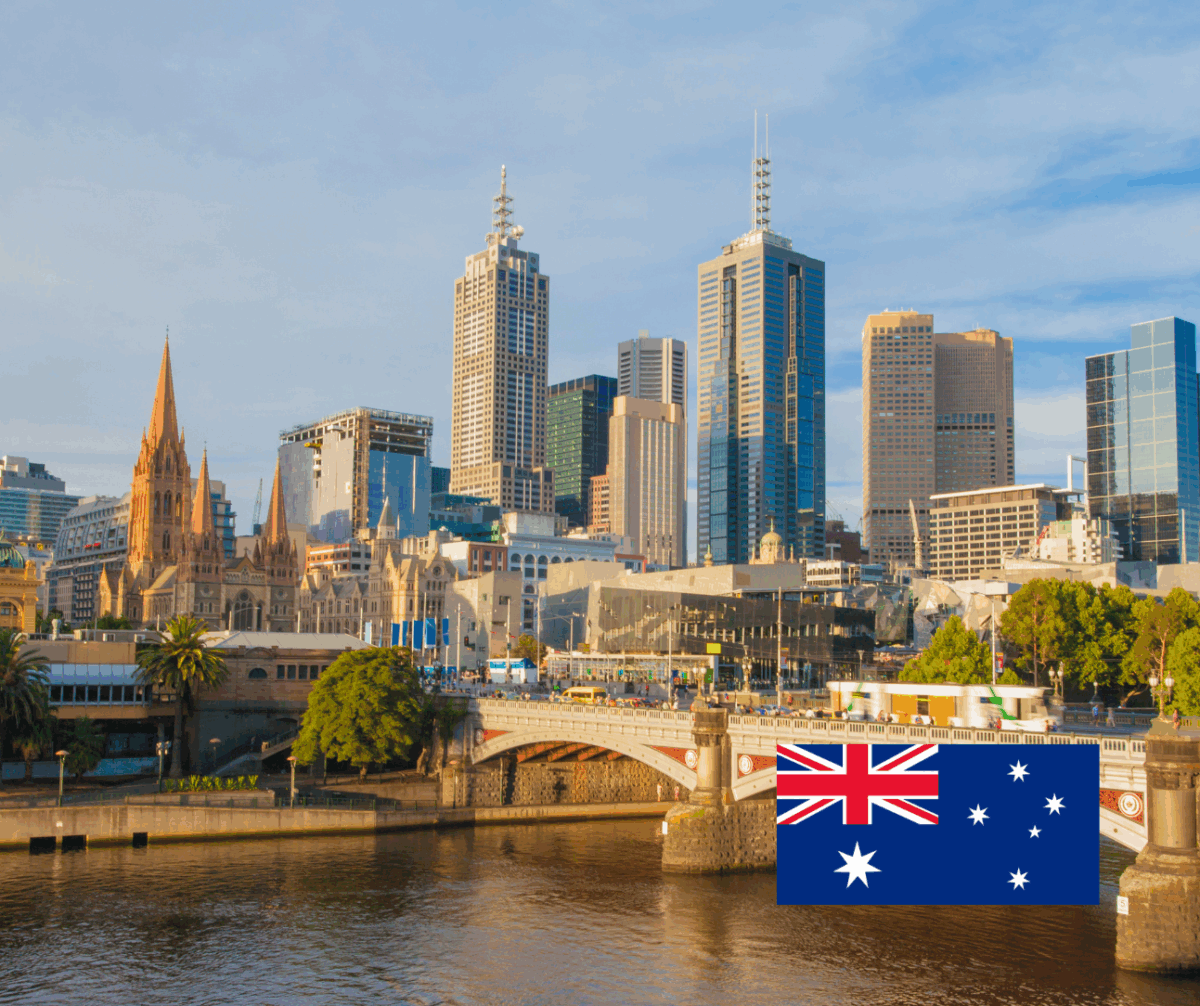What is The University of Melbourne Acceptance Rate?
The University of Melbourne is highly popular and competitive, with overall acceptance rates varying significantly between domestic and international applicants. Domestic undergraduate admissions are largely determined by Victorian ATAR or equivalent, and in recent years roughly 70–75% of first‐preference domestic applicants have received offers. By contrast, international entry is subject to quotas and global demand; Melbourne’s international student intake (about 45% of total enrolments) implies acceptance rates that can differ widely by year and program. For example, government data indicates Melbourne’s 2023 intake of new international students was on the order of 10,000, with the 2025 cap set at 9,300 (a 7% decrease). In general, international offers are more constrained by visa quotas and strategic caps, whereas domestic applicants are assessed via ATAR-equivalents or the University’s access schemes.
For application support – including tailored guidance on international applications our Global University Application Support service offers expert mentoring for study in Australia and worldwide.

Global University Application Support
Comprehensive guidance and preparation to help students get into leading universities worldwide.
The Recent History of University of Melbourne Acceptance Rates
The table below summarizes first‐preference domestic undergraduate applications, offers and implied acceptance rates at Melbourne (selection cycles 2018–2021). Data from the Victorian Tertiary Admissions Centre (VTAC) shows Melbourne typically receives ~13,000 domestic first-preference applications each year. Offers have been on the order of 9,500–9,800, yielding acceptance rates in the low 70% range. (Acceptance rate ≈ offers ÷ applications; yields from offers to enrolment have been ~64–66%.)
| Year (Intake) | First‐pref. Applicants | Offers Made | Acceptance Rate (offers/apps) |
| 2018 | 13,500 | 9,552 | 70.7% |
| 2019 | 13,175 | 9,765 | 74.1% |
| 2020 | 12,983 | 9,727 | 74.9% |
| 2021 | 12,983 | 9,727 | 74.9% |
Source: VTAC (Victorian undergraduate selection cycles).
For international undergraduates, official published acceptance rates are not publicly available. However, Melbourne’s large global applicant pool and an international cohort exceeding 40% suggest acceptance varies by program and year. (Indeed, Melbourne’s 2025 incoming cap of 9,300 suggests roughly 10,000 admits in 2023, implying an acceptance fraction for international seekers subject to stringent quotas.) For comparisons, publicly available analyses estimate similar “top 8” Australian universities have domestic first-choice acceptance on the same order – for example, Monash offered ~71% of its domestic applicants, RMIT ~61% – although these figures do not reflect postgraduate streams.
Latest Admissions Cycle (Domestic vs International)
In the most recent admissions cycle (Round 1, 2024/25), Melbourne issued approximately 9,700 offers to domestic undergraduate first-preference applicants (from about 13,000 applicants). About 6,400 of those offers were taken up (yield ~66%), reflecting typical enrolment yields of 60–70%. By contrast, Melbourne’s international undergraduate offers are managed separately and aligned with federal caps (the 2025 cap is 9,300 international students). Although the University does not publish separate application statistics by citizenship, available data indicate Melbourne admitted on the order of 10,000 new international undergraduates in 2023. Postgraduate admissions (both research and coursework) are similarly competitive, requiring strong prior records.
Recent Trends
The latest cycle reinforced some ongoing trends. Demand from high-achieving students is at an all-time high, with Melbourne remaining the #1 preference in VTAC for courses like Arts, Science, Commerce, and Biomedicine (which together made up four of the top five most-preferred courses in the state). The university’s decision to broaden Access Melbourne eligibility for 2023 entry paid off in a record number of offers to students from disadvantaged or under-represented backgrounds Another trend is that admission standards remain extremely high – due to the volume of strong applicants, minimum ATAR cut-offs in 2023 rose in many courses, in some cases reaching the advertised guaranteed entry scores. In short, more applicants are fighting for each spot, so Melbourne can essentially fill its classes with top-ranking students.
Comparison with Other Top Australian Universities
Among Australia’s leading universities, Melbourne’s domestic UG acceptance rate is broadly similar to its peers. For instance, in the same VTAC cycle Melbourne offered ~71% of its domestic applicants, Monash ~71%, while RMIT offered ~61%. Deakin University offered nearly all its domestic applicants (~98%) in 2019 (an outlier due to its program mix). (By contrast, high‑ranking NSW and ACT universities like Sydney and ANU, which use other admissions systems, report much lower overall rates – on the order of 30–35% – but these figures mix undergraduate and postgraduate streams and reflect different applicant pools.)
| University | Domestic UG Acceptance (~%) |
| Melbourne | 71% (≈9,552 of 13,500) |
| Monash | 71% (≈12,125 of 16,985) |
| RMIT | 61% (≈7,838 of 12,839) |
| Deakin | 98% (≈8,512 of 8,696) |
Sources: VTAC (2019 data). International acceptance rates tend to be lower due to quota constraints.

Global University Applications Webinar
Watch our free webinar on for expert advice on applying to universities beyond the US and UK.
Entry Requirements
The University of Melbourne emphasizes both academic results and a broad view of applicants. For domestic undergraduates, admissions are primarily based on the ATAR (or equivalent) and subject prerequisites. A personal statement is not required. Melbourne “does not adjust ATARs” – it simply uses the rank provided by VTAC. For international and postgraduate applicants, the University reviews complete academic records (year 12 or university results), English proficiency, and any program-specific requirements. Graduate coursework and research programs often require additional supporting materials (references, statements of purpose, portfolios or interviews for some fields). Overall, Melbourne’s admission process is holistic in that it considers the whole application (especially for professional degrees), but academic merit (high school or prior degree performance) remains the foremost criterion.
Entry Requirements from Major Applicant Pools
Applicants from different education systems must meet Melbourne’s entry standards. For example, UK students typically need high A-level grades (often AAA–A*AA); IB students generally require 36–40+ points (with top scores in relevant Higher-Level subjects); US students must present a strong high school record (GPA usually well above 3.5) plus SAT/ACT scores if requested. In all cases, Melbourne specifies subject prerequisites and a minimum overall performance (roughly equivalent to at least 70% average). The University accepts predicted grades for mid-year intakes, and uses notional ATARs (calculated by VTAC or other agencies) to compare qualifications. Meeting the published minimum requirements makes one eligible to apply, but actual selection is based on the overall pool and any selection rank adjustments (e.g. Access Melbourne bonus for disadvantaged students).
Early vs Regular Offers
Unlike the U.S. system, Australian universities do not generally have an “Early Decision” vs “Regular Decision” distinction with separate acceptance rates. All domestic applications for undergraduate study are typically processed through centralized systems (like VTAC for Victoria, where Melbourne is located), and offers are issued in rounds based on academic results release dates. The University of Melbourne participates in these standard offer rounds:
- December Round: This is the first major round of offers for current Year 12 applicants (domestic). For the 2024 intake, Melbourne made nearly 6,000 offers in the December round as soon as results were available. This early round primarily included students from Victoria and certain other states that had results ready by late December.
- January Round(s): Subsequent offers are made in January to fill remaining places. These include offers to students from states whose results came out later (e.g. Queensland, whose main round was January) and late international qualifications like IB. In January 2024, Melbourne continued to issue offers to top-up the intake across its courses. By this stage, many courses were already full from the December round, with only limited slots left for second-round offers.
The key point is that the vast majority of Melbourne’s offers are made in the first round, and any later-round offers are comparatively few. Therefore, it’s not that Melbourne has a separate “early admission” scheme with a different (easier or harder) acceptance rate – it’s more about timing and logistics. Essentially, if you meet the entry requirements and are competitive, you’ll get an offer in the first round. If not, you might be waitlisted for a second round, but chances diminish as places fill up.
Key Factors Affecting Melbourne’s Acceptance Rate
Several factors influence why the University of Melbourne’s acceptance rate is at its current level and how it may change:
Growing Volume and Quality of Applicants
The university attracts far more applicants than it has places available. This demand has been growing, fuelled by Melbourne’s #1 ranking in Australia and strong global reputation. Each year, thousands of top students list Melbourne as their first preference. As academic achievement levels rise (e.g., more students attaining high ATARs), the competition becomes fiercer. Essentially, Melbourne can afford to be picky – it admits students with stellar academic records, and even many high achievers are turned away simply because there aren’t enough spots. The university’s international profile also means an influx of applications from abroad; as an English-speaking, highly ranked institution, Melbourne is an attractive option for students from Asia, Europe and North America. This international demand adds to the applicant pool.
Holistic and Contextual Admissions Policies
Australian admissions are primarily academic merit-based, but Melbourne does employ some holistic measures, mainly through its Access Melbourne programme and other special entry schemes. Under Access Melbourne, students from disadvantaged backgrounds (low socio-economic status, rural areas, Indigenous Australians, etc.) may gain entry on slightly lower ATARs or via reserved spots. Melbourne has expanded this scheme recently, which actually increases the number of offers but also broadens the pool of applicants who are considered . The net effect on acceptance rate is hard to isolate, but the policy reflects a more holistic view of applicants beyond just a number. Likewise, for some faculties, non-ATAR criteria are considered: Fine Arts and Music applicants might need to present portfolios or auditions; some courses consider interviews or aptitude tests.
The “Melbourne Model” and Postgraduate Pathways
One distinctive factor is Melbourne’s curriculum structure known as the “Melbourne Model.” Students pursue broad three-year bachelor’s degrees and then competitive postgraduate professional entry into fields like law and medicine. It means that Melbourne’s undergraduate applicant pool is a little self-selecting. This could reduce some pressure on undergrad admissions in certain programs, but in practice Melbourne’s slots are immediately filled by other applicants – often those just as strong academically. The university’s undergrad degrees in Arts, Science, Commerce, etc., remain extremely popular. On the flip side, Melbourne’s postgraduate programs have their own acceptance rates which are quite low. For instance, getting into the Melbourne MD program or the JD (law) program after undergrad is highly competitive Many top students flock to Melbourne for undergraduate with an eye on securing a postgraduate place later.
Applicant Decision-Making & Yield Effects
Finally, the acceptance rate is influenced by whether applicants choose to apply and, once admitted, whether they choose to attend (yield). Melbourne’s high yield means that it doesn’t need to admit far more people than it intends to enrol. In some U.S. universities, for example, an institution might admit double the number of students it wants, expecting many to decline. At Melbourne, the gap between offers and enrolments is much smaller. Melbourne knows that offers will be accepted by most, so it can offer roughly the number of spots available. Additionally, because the application process in Australia limits you (you list preferences rather than applying unlimited to every uni), most who want Melbourne will apply, and those who prefer elsewhere won’t even be in the Melbourne applicant pool. This means Melbourne’s pool is rich with genuinely interested candidates, again bolstering yield.
Get Extra Support from Dukes Plus
Our previous tips were based on application strategy, but to become a stronger candidate and really impress the University of Melbourne admissions team, the best advice is to get personal support from experts.
At Dukes Plus, we’ve helped students get into top universities worldwide – including The University of Melbourne – since 1999. Our admissions consultants and tutors can give you 360-degree support for all aspects of the application – from programme selection to test prep and application submission. Our guidance is designed to maximise your chances of admission at every stage.
Discover why 75% of our students get into their first-choice university. Learn more about our Global University application support, or book a free consultation with our friendly team today.

Speak to an Expert
Book a free consultation today to find out how Dukes Plus can help you get into the University of Melbourne.

